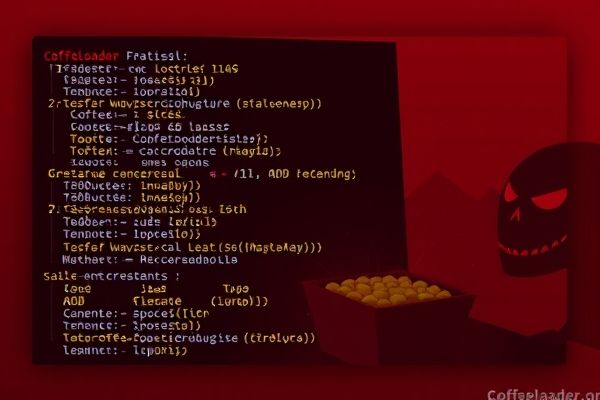Cybersecurity professionals are increasingly concerned about advanced malware threats like CoffeeLoader, which employs sophisticated techniques to evade detection by endpoint security measures. In this post, we will explore the malware’s innovative methods, its behavior, and its implications for cybersecurity.
Takeaways:
- ✅ CoffeeLoader utilizes a specialized GPU-based packer called Armoury to complicate analysis.
- ✅ It employs various evasion techniques like call stack spoofing and sleep obfuscation to avoid detection.
- ✅ This malware is associated with the well-known SmokeLoader, raising concerns about its evolution and persistence.
The Rise of CoffeeLoader
The emergence of CoffeeLoader coincides with a notable rise in sophisticated malware strains capable of bypassing conventional security measures. This particular malware is designed not merely for data exfiltration but to download and execute additional payloads, acting as a loader for other malicious software. According to insights from Zscaler ThreatLabz, it utilizes an advanced GPU-based packer known as Armoury, named after ASUS’s legitimate Armoury Crate utility. This innovative packing method allows CoffeeLoader to execute code directly on a system’s GPU, complicating analysis significantly in virtual environments.
Its operational framework relies on a domain generation algorithm (DGA) that establishes fallback mechanisms for command-and-control (C2) servers. This means that even if one communication channel is blocked, CoffeeLoader can adapt to maintain its connectivity and achieve its mission of delivering harmful payloads. By leveraging malware techniques that make it resilient against detection, such as call stack spoofing and sleep obfuscation, CoffeeLoader epitomizes the evolving landscape of cyber threats.
Techniques Behind the Malware
The methodologies employed by CoffeeLoader illustrate just how advanced modern cyber threats have become. Call stack spoofing fakes the call stack, obscuring the origin of function calls. This is crucial for evading Endpoint Detection and Response (EDR) systems, as they often rely on tracking execution paths to identify suspicious activities. In contrast, sleep obfuscation minimizes the chances of detection while the malware payload is in a non-active state.
By utilizing techniques like Windows fibers, which permit concurrent execution of code, CoffeeLoader can further obscure its operations. This multi-faceted approach to evasion places immense pressure on cybersecurity frameworks tasked with detecting these advanced threats.
Conclusion
The rise of CoffeeLoader underscores the necessity for organizations to elevate their cybersecurity posture. This malware not only illustrates the sophistication of current cyber threats but suggests a need for enhanced endpoint protection mechanisms. As threats evolve, so must our defense strategies, incorporating advanced detection methods to counteract such sophisticated malware.
FAQs:
- 1. What makes CoffeeLoader sophisticated compared to other malware?
CoffeeLoader is notable for its use of GPU-based packing, evasion techniques like call stack spoofing, and its ability to maintain communication with C2 servers through a DGA. - 2. How can organizations defend against CoffeeLoader?
Organizations should implement advanced EDR solutions, regularly update their systems, and conduct continuous security awareness training for employees. - 3. Is CoffeeLoader linked to any previous malware?
Yes, it shares characteristics with SmokeLoader, indicating potential evolution from previous malware families and a complex relationship between these threats. - 4. What role does the Armoury packer play in CoffeeLoader’s operation?
The Armoury packer is crucial as it executes malicious code on a system’s GPU, complicating the analysis of the malware and evasion of detection.



